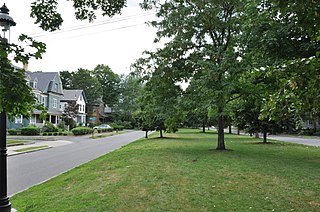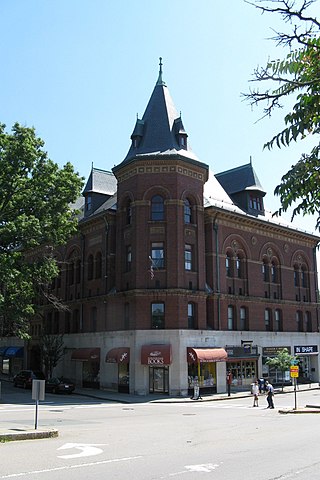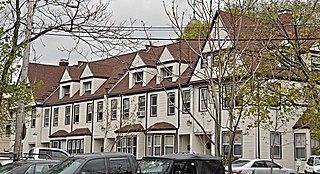Inclusionary zoning (IZ) is municipal and county planning ordinances that require or provide incentives when a given percentage of units in a new housing development be affordable by people with low to moderate incomes. Such housing is known as inclusionary housing. The term inclusionary zoning indicates that these ordinances seek to counter exclusionary zoning practices, which exclude low-cost housing from a municipality through the zoning code. Non-profit affordable housing developers build 100% of their units as affordable, but need significant taxpayer subsidies for this model to work. Inclusionary zoning allows municipalities to have new affordable housing constructed without taxpayer subsidies. In order to encourage for-profit developers to build projects that include affordable units, cities often allow developers to build more total units than their zoning laws currently allow so that there will be enough profit generating market-rate units to offset the losses from the below market-rate units and still allow the project to be financially feasible. Inclusionary zoning can be mandatory or voluntary, though the great majority of units have been built as a result of mandatory programmes. There are variations among the set-aside requirements, affordability levels, and length of time the unit is deed-restricted as affordable housing.

The First Church of Christ, Scientist is the administrative headquarters and mother church of the Church of Christ, Scientist, also known as the Christian Science church. Christian Science was founded in the 19th century in Lynn, Massachusetts, by Mary Baker Eddy with the publication of her book Science and Health (1875).

Newtonville is one of the thirteen villages within the city of Newton in Middlesex County, Massachusetts, United States.

West Newton is one of the thirteen villages within the city of Newton in Middlesex County, Massachusetts, United States.

The Christian Science Plaza is a 13.5-acre (5.5 ha) site on the corner of Massachusetts Avenue and Huntington Avenue in the Back Bay neighborhood of Boston, Massachusetts. The plaza, which is owned by the Church of Christ, Scientist, was designated as a Boston Landmark by the Boston Landmarks Commission in 2011, with the Commission describing it as a "heavily-used public space."

The Dupee Estate, located at 400 Beacon Street in the village of Chestnut Hill, Newton, Massachusetts, was the last home of Mary Baker Eddy, the founder of Christian Science.

The Second Church in Newton, United Church of Christ, is located at 60 Highland Street in West Newton, a village of Newton, Massachusetts. This church is rooted in the Congregational denomination, welcomes all visitors, and does not require uniformity of belief. Its present church building, a Gothic Victorian structure designed by architects Allen & Collens and completed in 1916, was listed in the National Register of Historic Places in 1990.

The Washington Park Historic District is a historic district in the village of Newtonville, in Newton, Massachusetts. It includes the following properties, dating to between 1870 and 1900: 4 to 97 Washington Park plus 5 and 15 Park Place. The focal point of the district is the city park which is located in the median of the street of the same name. On March 12, 2008, it was added to the National Register of Historic Places.

The Masonic Building, located at 296 to 304 Walnut Street and 456 to 460 Newtonville Avenue in the village of Newtonville, in Newton, Massachusetts in the United States, is a historic building built in 1896 as a Masonic Lodge hall. It is a massive four-story redbrick Renaissance-style building with a turret on the corner and a steep slate pyramid roof. The upper floors are still used for meetings of Masonic lodges and appendant orders, while the lower floors are used for retail and office purposes. The building was approved for listing on the National Register of Historic Places in 1986, but due to owner objection it was not listed. However, it was included as a contributing property to the Newtonville Historic District when that district was expanded in 1990.

The Newtonville Historic District is a historic district in the village of Newtonville, in Newton, Massachusetts. The district encompasses the southern portion of the village's business district, as well as surrounding residential areas. It was listed on the National Register of Historic Places in 1986, and enlarged in 1990.

The Church of the Open Word is a historic Swedenborgian church building located at 19 Highland Avenue in the village of Newtonville, in Newton, Massachusetts. The congregation was organized in 1860 and a wooden chapel was erected on the rear of this property. The stone Gothic Revival building was erected on the front of the property in 1893.

The Central Congregational Church is an historic church building located at 218 Walnut Street, in the village of Newtonville in Newton, Massachusetts. Built in 1895, it is the only ecclesiastical work in the city by the noted Boston architects Hartwell and Richardson, and one of its finest examples of Romanesque architecture. The building was listed on the National Register of Historic Places in 1986. Since September 7, 2003, it has been the Newton Campus of the Boston Chinese Evangelical Church.

The University Child Development Center (UCDC) at the University of Pittsburgh is a child care and early childhood education center located on Clyde Street in Shadyside just east of the main Oakland campus approximately one half mile from the center of campus at the Cathedral of Learning and adjacent to the rear property of the University's Chancellor's Residence on the Oakland-Shadyside border in Pittsburgh, Pennsylvania.

The Central Square Historic District is a historic district encompassing the central town common of the city of Waltham, Massachusetts, and several commercial buildings facing the common or in its immediate vicinity. The common is bounded by Carter, Moody, Main, and Elm Streets; the district includes fourteen buildings, which are located on Main, Elm, Lexington, and Church Streets, on the north and east side of the common. The district was listed on the National Register of Historic Places in 1989.

1–6 Walnut Terrace in the Newtonville village of Newton, Massachusetts is a distinctive Shingle style rowhouse. Built in 1887, it is one of the city's few examples of a 19th-century rowhouse. The building was listed on the National Register of Historic Places in 1986.

Third Church of Christ, Scientist, established in 1918, is a Christian Science church in downtown Washington, D.C. From 1971 to 2014, the church was located in a controversial building at 16th and I Street NW. Considered a significant work of "Brutalist" church architecture by some critics, the building was considered unsatisfactory by members of the Church's congregation, which shrank over the years. In 2007, the church applied for a demolition permit for the building to permit sale and redevelopment of the site, with plans to relocate to a more suitable structure. A 1991 application for landmark status for the building, filed to forestall a demolition threat then, was subsequently approved. After a lawsuit and hearings, the District of Columbia issued a demolition permit in May 2009, and the building was demolished in 2014. In 2015, Third Church merged with First Church of Christ, Scientist. The congregation continues as First Church and conducts its activities in a portion of the new building.

The former First Church of Christ, Scientist, is an historic Christian Science church building located at 700 22nd Street, Rock Island, Illinois, United States. Designed by architect William C. Jones of Chicago in the Palladian style, it was built between 1914-1915. Its exterior walls are of brick covered by Bedford limestone. Its superimposed front portico is supported by six 2 story columns with egg-and-dart capitals. Its dome actually consists of 2 domes: an outer dome and an inner dome which are separated by a space for lighting fixtures and maintenance. The inner dome consists of some 8,000 colored fish scale glass panes on a wooden support structure. The inner dome is similar to the inner dome of First Church of Christ, Scientist in Kalamazoo, Michigan, which was designed by William C. Jones in 1913.

First Church of Christ, Scientist is an historic redbrick 6-story domed Christian Science church building located at 13 Waterhouse Street, in Cambridge, Massachusetts. It was designed in 1917 by church member Giles M. Smith of the noted Boston architectural firm of Bigelow and Wadsworth, who patterned it after Thomas Jefferson's The Rotunda at the University of Virginia and the Pantheon in Rome. Due to cost constraints it was built in two phases between 1924 and 1930. The basement and ground floor levels topped by a belt course comprised the first phase, while the additional four stories and the massive dome comprised the second and final phase. The dome itself was designed and built by the noted Guastavino Fireproof Construction Company, which in 1898 had done the reconstruction of the dome in The Rotunda at UVA and the construction in 1906 of the dome of the Mother Church Extension in Boston. Guastavino used its patented tile arch system consisting of Akoustolith, a porous ceramic material resembling stone, on the interior, with limestone on the exterior. The tile was manufactured at its plant in nearby Woburn. In 1933 copper flashing was added to the exterior of the dome in order correct a leakage problem. An oculus provided light to the interior. The first services in the completed building were held on April 30, 1930, and after becoming debt free, it was dedicated on May 23, 1937.

Hartwell and Richardson was a Boston, Massachusetts architectural firm established in 1881, by Henry Walker Hartwell (1833–1919) and William Cummings Richardson (1854–1935). The firm contributed significantly to the current building stock and architecture of the greater Boston area. Many of its buildings are listed on the National Register of Historic Places.

The First Church of Christ, Scientist in Manhattan is a 1903 building located at Central Park West and 96th Street in the Upper West Side of Manhattan, New York City. The building is a designated New York City landmark.





















